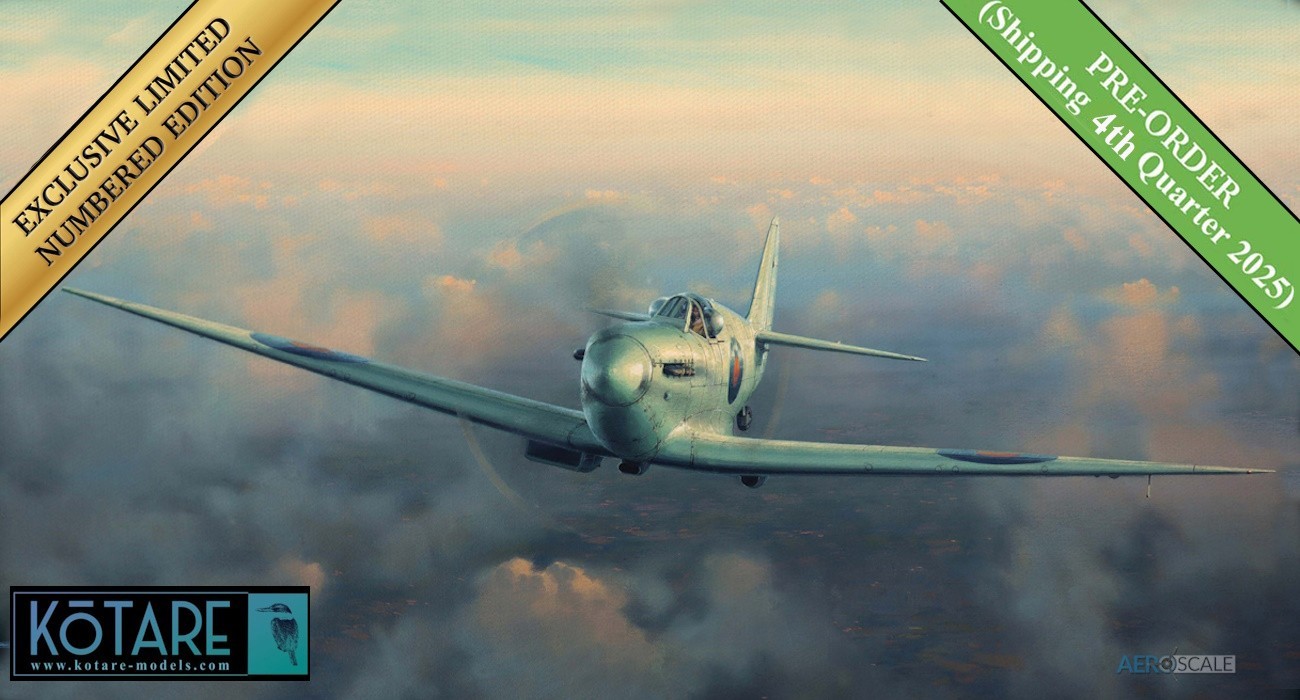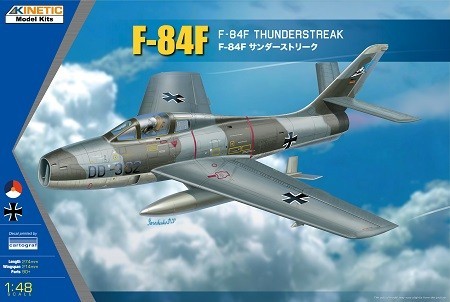
Introduction
F-84F Thunderstreak, kit KI-K48068, is a 1/48 injection molded kit from Kinetic. Their F-84F was their debut model, released in 2007. Since then, it has been re-released two previous times with new decals. This is the third re-release with decals for the Bundeswehr Luftwaffe and Koninklijke Luchtmacht (Royal Netherlands AirForce). Let’s take a look at how the model has held up.
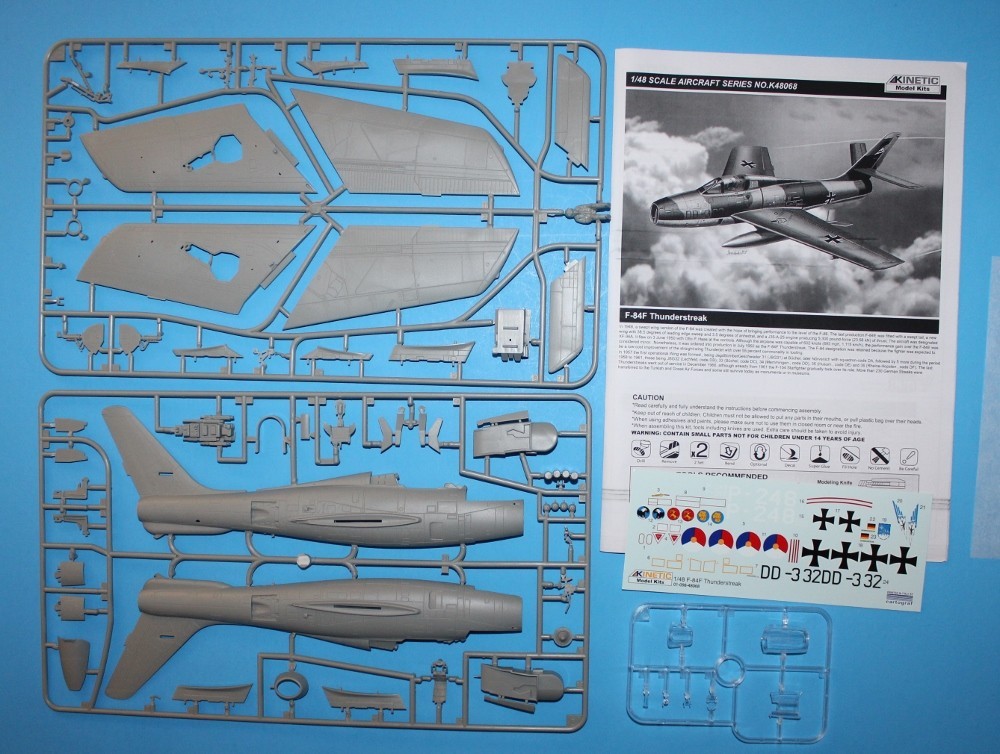
In the box
This model is held inside an end-opening carton. Inside are four baggies, separately holding sprues A, B, C x2, and the clear parts. Decals and instruction sheet round out the contents.
Eighty-five parts build up this Thunderstreak:
- Light gray styrene X 78
- Clear X 7.
Molding is crisp. There are no ejector circles that should be visible after assembly, no sink marks, and minor mold seams or flash. Most of the flash I did not even notice until cropping the images. Per the fad of the past generation, the surfaces have a slight matte finish. Happily, Kinetic eschewed the fashion of festooning the airframe with recessed rivets, although larger fasteners are represented. Recessed panel lines demarcate airframe construction and while they are agreeably shallow, they seem a bit wide. Stepped surfaces such as the landing gear struts are crisply defined. I have one complaint about Kinetic’s injection-molding: Kinetic allowed big “stumps” projecting from parts instead of overflow tabs. None were difficult to cut away but they are annoying.
Clear parts are clear and without distortion. Rivets detail the interior of the rear piece of the three-piece canopy. A reflector gunsight, mirror, landing lights are included.
Test-fitting promises tight exterior seams requiring minimal filling. I state exterior because the nose gear well roof halves join together with a wide gap between the left and right parts, although the rest of the assembly seams fit perfectly. I found a good photo of a Belgian F-84F (FU-30) nose wheel well and the gap is not there. Finally, the compound curvature of the nose inlet is a separate piece that will require some sanding to blend with the contours of the fuselage. That is the only significant fit problem I discovered while dry fitting the parts. Overall, an impressive job, Kinetic.
No external weapons are included but four drop tanks and a quartet of RATO bottles are provided.
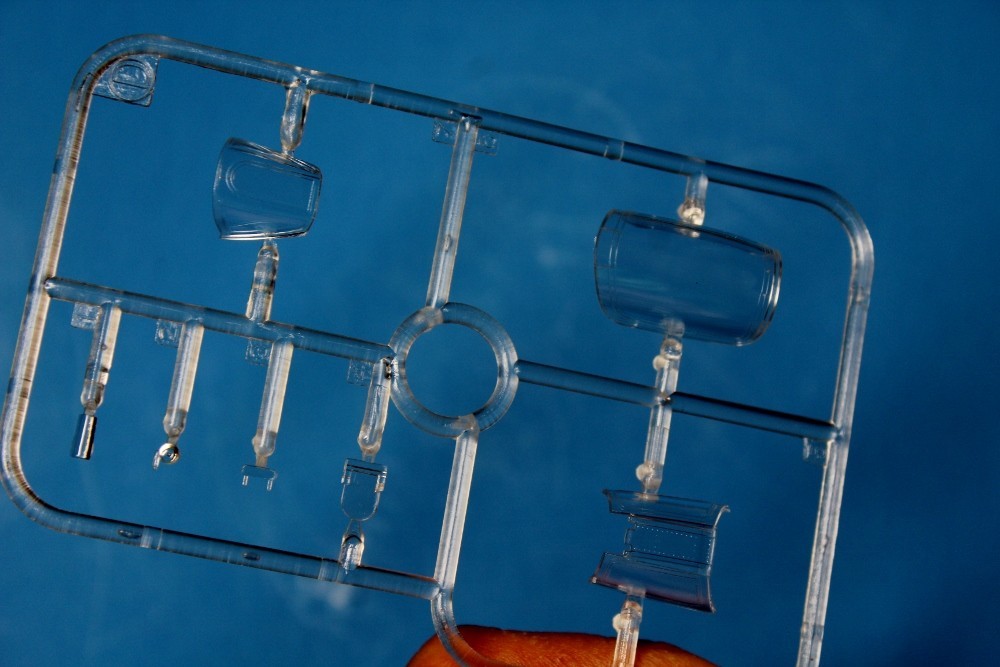

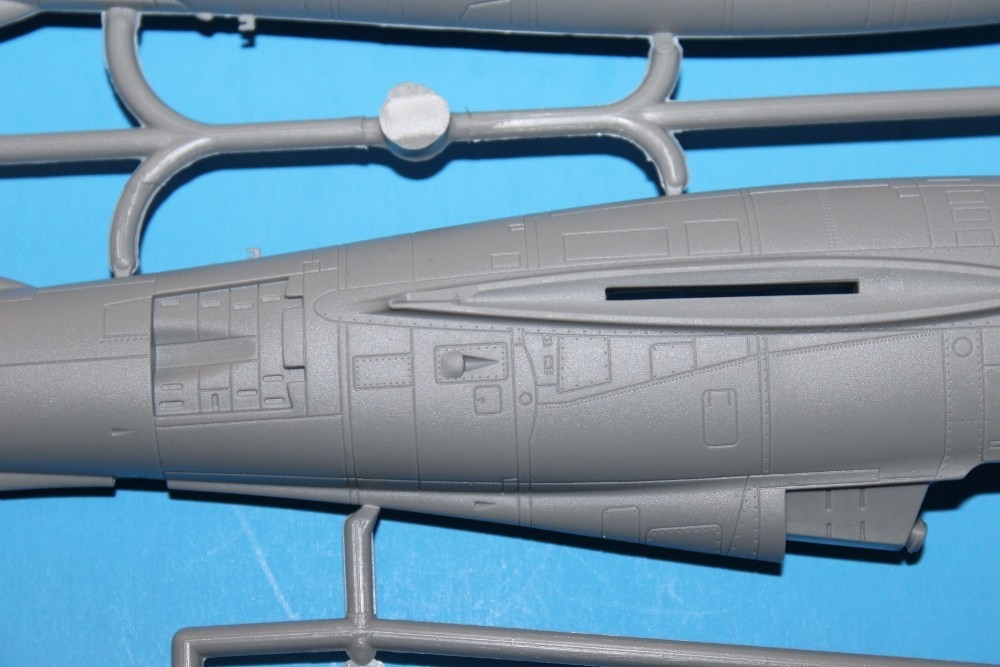
Detail
Those nose gear well halves? They also join to form the inlet splitter plate and include the gear doors. The splitter wedge also sports the pitot tube. The seam is so tight and smooth that I see no need for any filler or sanding.
The assembled cockpit looks good – in and out of the model. It is a tube with side consoles with molded details. Basic rudder pedals are integral to the part. In the middle is an accurate control stick and on the left side you will mount a well molded and busy looking hydraulic apparatus. A nice instrument panel is molded although the bezel and dial details are shallow. Its arrangement closely matches that seen in photos of F-84Fs I looked at; the panel needs a bit of trimming to fit into the mounting slots in the tub. What I am most impressed with is the four-piece "boom bucket" ejection seat (Aircraft Mechanics Incorporated, Seat No. 10100-13, MIL-R-8236). It does not have a back pad (intended to be the parachute) and shows off the concave back. Another detail is the pipe attached to the inside of the windscreen frame – I have never seen this part included in a kit before. Each fuselage half features low relief of cockpit items. An F-84F cockpit had some prominent levers and gizmos that are not part of the kit but easily created with stretched sprue or card shapes. Kinetic includes a nicely detailed pilot to fill the cockpit.
Ahead of the cockpit is the three-piece nose gun bay assembly. The molded relief .50-caliber machine guns are simple but effective, especially after the separate ammunition boxes are positioned. Other relief detail includes radar sighting boxes and other items. While there is not much to see of the sides after the fuselage halves are closed up, no internal structure is represented, except on the inside of the gun bay cover.
Internal structure is represented in the main gear wells and the air brake indents – nicely done, as are the air brake pedals.
Speaking of internal detail, how about the jet pipe? It had four tear shaped bulges evenly spaced at the outlet; two are molded as part of each pipe half – which fit together seamlessly – but the other two are where the halves join together. Those two are separate parts.
Landing gear looks above average. Brake lines are molded onto the struts. An interesting twist to the wheels is that the tires are molded in halves to fit around the hubs.
Various actuators are provided for the landing gear and canopy system. The fuel dump vent, instead of being glued to the exterior, attaches inside the fuselage and sticks out through a port.
Between molded features and separate parts, this jet offers respectable detail right out of the box.
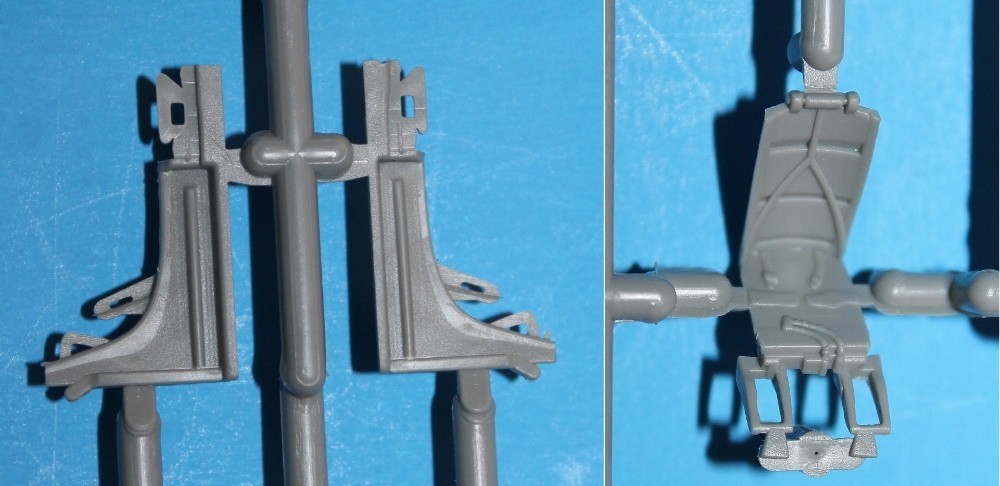

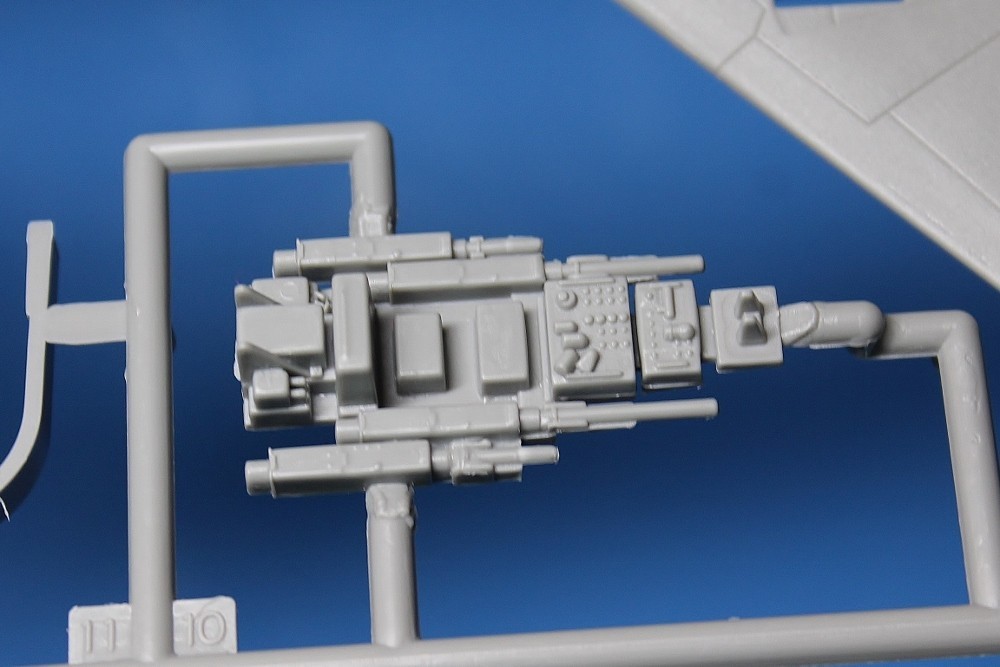
Several more detail photos can be seen in the discussion area, below.
Instructions and Decals
Assembly is directed via a 12-page A-4 sized booklet. The steps are clearly illustrated except for a couple of items. A basic aircraft history is provided. Parts are identified by number and keyed to paint colors. If you paint the model per the instructions the model will look good but if you crave accuracy, check your sources; I found an excerpt from a 1950s Tech Order for the F-84F listing the color for components by the then-current standard and the forthcoming FS colors.
Colors from what brand of paint? Kinetic includes a chart of 14 colors and 5 brands:
• GSI Creos
• Humbrol
• Mig AMMO
• Tamiya
• Vallejo
Painting and decal placement guidance is provided by 26 grayscale illustrations. (Eleven seem to be a duplicate of the previous page.) With the decals you can build one of four F-84Fs:
1. Luftwaffe, DD-332, JagdBomber Geschwader 34, Memmingen Airbase
2. Koninklijke Luchtmacht, P-248, No.311 Squadron, Volkel Air Base
3. Koninklijke Luchtmacht, P-248, No.314 Sqn, Eindhoven Air Base
4. Koninklijke Luchtmacht, P-248, No.315 Sqn, Eindhoven Air Base
Kinetic is clever with choosing those Netherlander squadrons: one Thunderstreak rotated through three squadrons, thus requiring only one set of airframe markings and three individual unit badges – that’s what is known as a “force multiplier!” You can look at some color photos of the real P-248, here.
Cartograph decals are included and are excellent, as expected. Solid colors, precise printing, thin with minimal clear film.
Thus, modelers have an impressive instruction sheet to guide assembly, and excellent decals.
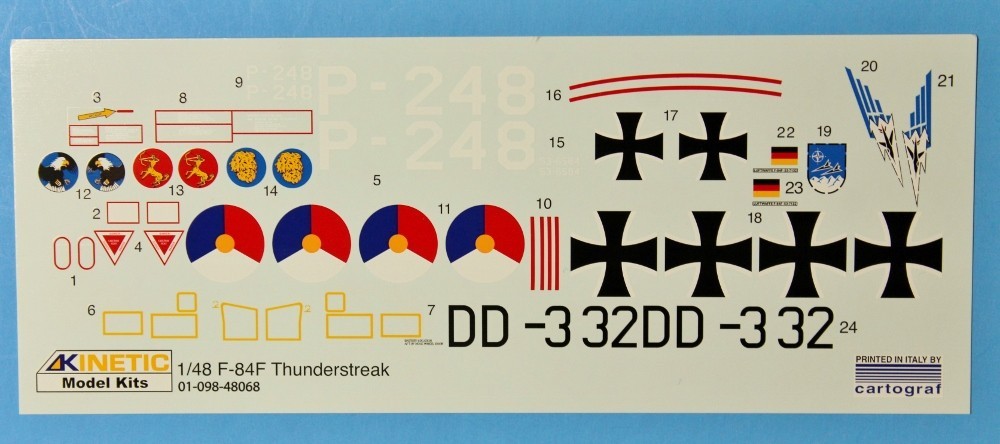
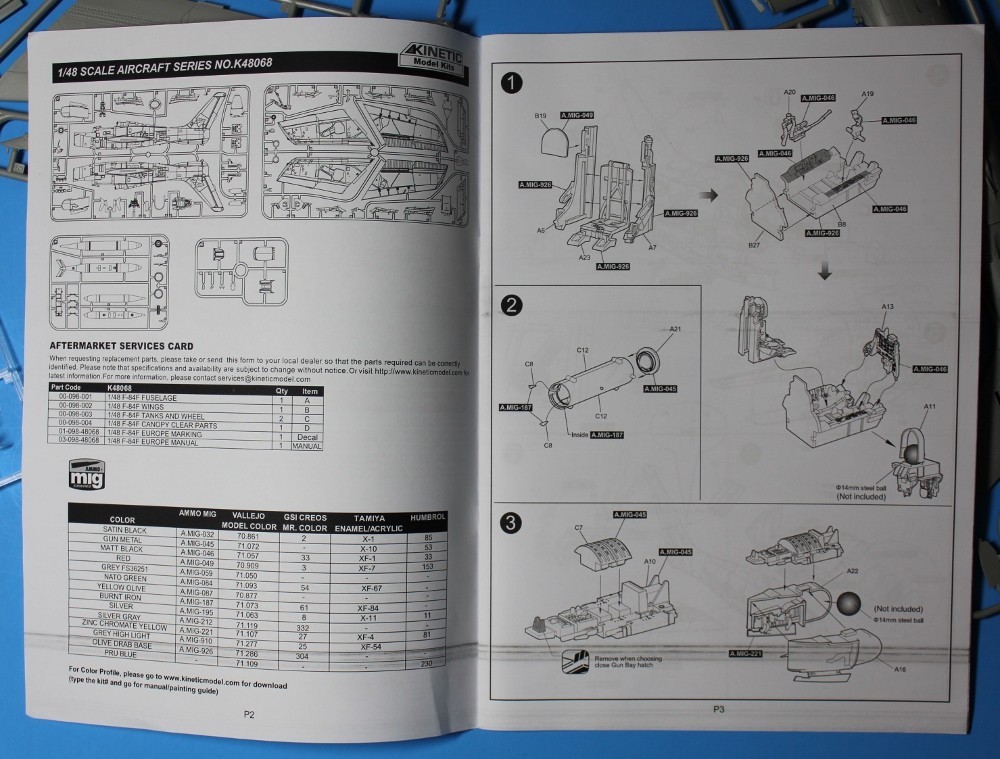

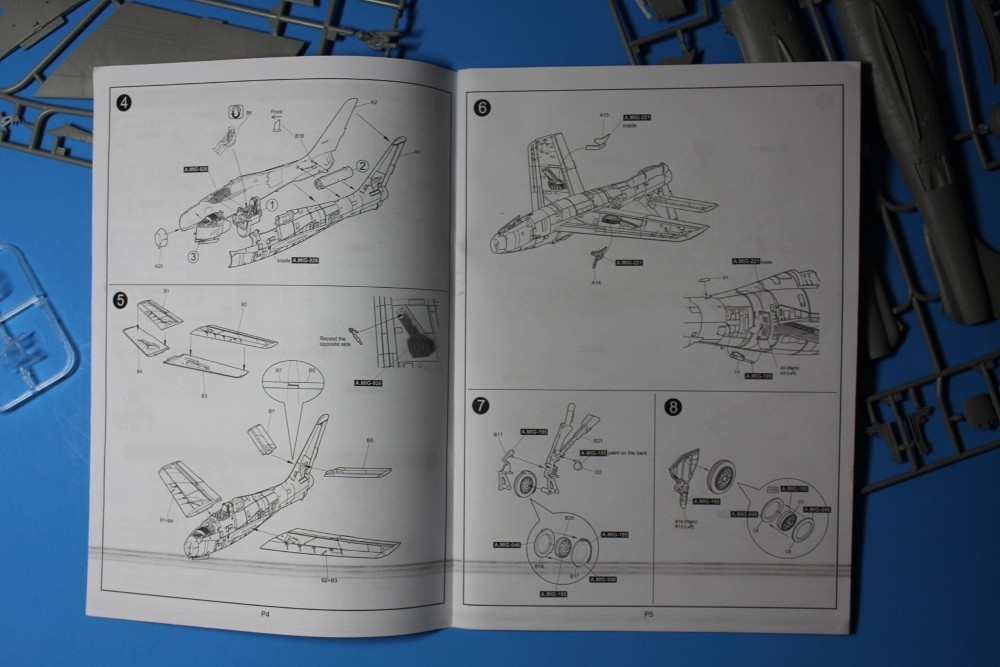
Conclusion
Kinetic’s F-84F Thunderstreak, kit KI-K48068, offers respectable detail right out of the box. Molding is high-quality despite those “stumps’.” Fit is above average, too. Cartograph decals – need I say more? Those overflow stumps are annoying but they do not take away from the overall buildability of the model. The gap inside the nose gear wells perplexing but it will not be visible unless you make an effort to see it.
Overall, I think this is an attractively easy to build and detailed model, and is a bargain. Recommended.
Many thanks to Kinetic for providing the sample for review. Item KI-K48068 is available now from Lucky Model - Price: USD 19.98.
Please remember, when contacting retailers or manufacturers, to mention that you saw their products highlighted here - on AEROSCALE.





















